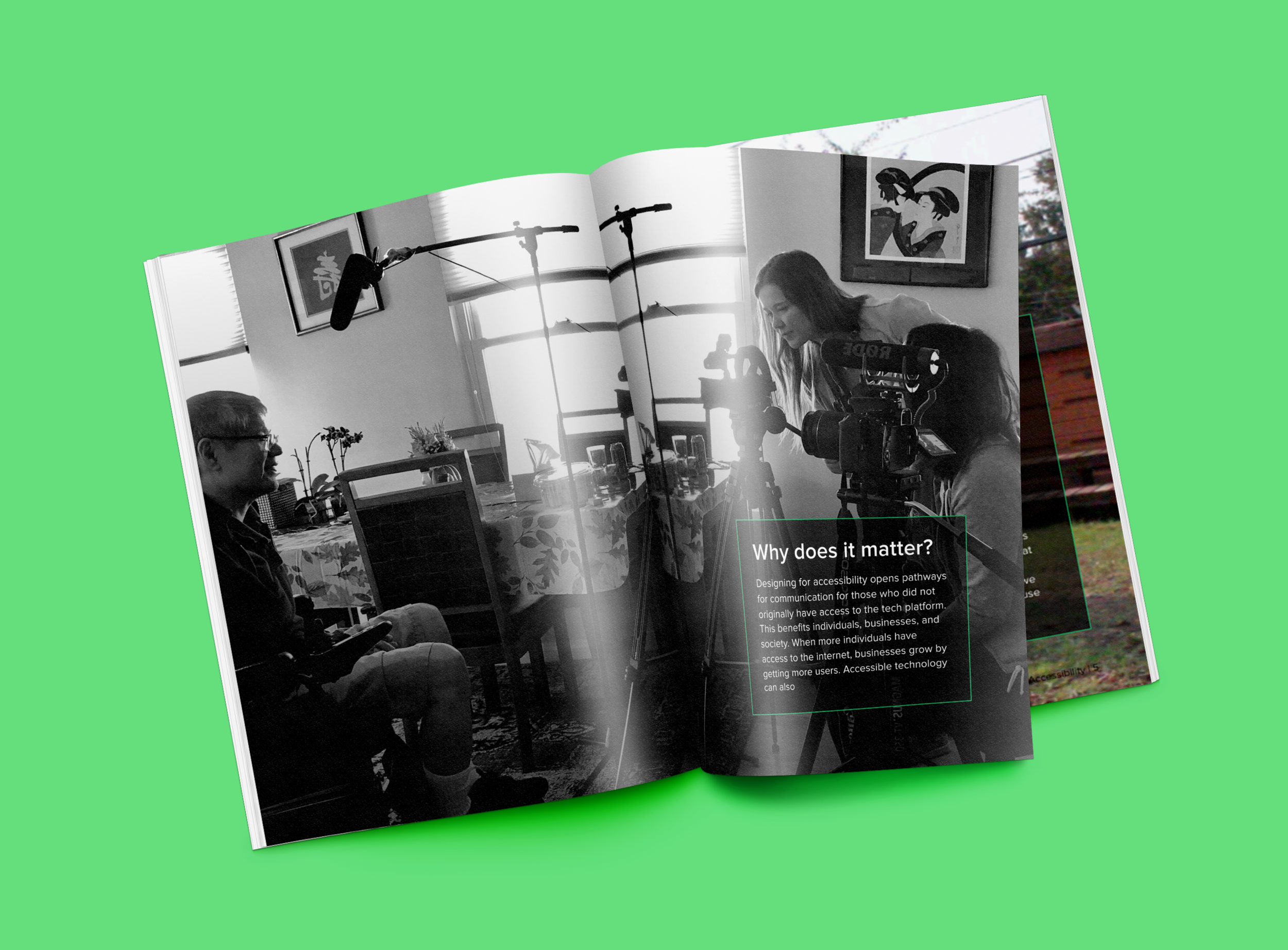
Inclusive Design For Hulu
Our cohort partnered with Hulu to help create a more inclusive experience for people with special needs and challenges while using Hulu.

Inclusive Design Research Guide Book created by Team Hulu & Hang
OVERVIEW
CLIENT:
Hulu
PROCESS:
Stakeholder Interviews, Expert Interviews, Secondary Research, Ethnographic Research, Prototyping and Testing.ROLE:
Task Manager, Interviewer, Presenter, Note-taker, Interaction Designer, Design ResearchPARTNERS
Ivan De la Rosa, Kathleen Hwang, Luke Buenaventura

Challenge
“How might we design Hulu to be more accessible for people with needs or different challenges when it comes to discovering and viewing content?”
For our senior year in the IXD program, we were teamed up with Hulu and challenged to help create a product or experience that will benefit people with disabilities. Five teams each selected a target audience to research how they experience streaming video content.
Understanding
Through primary and secondary research we learned that disabilities have evolved beyond the physical space of elevators and ramps and into the digital space of the world wide web. However, equal access to the internet did not become standard for companies until December 2008. That is when the Web Content Accessibility Guidelines (WCAG) 2.1 created a wide range of recommendations for making Web content more accessible. However, many companies still lack accessible content on their sites. Also, we learned a lot about how people with different disabilities use different technology to accommodate their needs. The next step for us was to find people who suffer from extreme cases of limitations and understand how they use technology in their environment. It was crucial for us to empathize with the user to understand their pain points and gain insights.
Research
Getting to know the user in the privacy of their home was a feat for itself. The art of conducting an in-home interview is a skill that we slowly became to acquire through the help of our Hulu mentor and our professor. We interviewed a total of five disabled people who heavily rely on technology as part of their everyday life. We talked to people such as Joanne who suffers from Congenital Myopathy since birth. This defect primarily affects her skeletal muscle fibers and causes muscular weakness. Issac is another of our participants who suffer from multiple sclerosis. It is a disease in which the immune system eats away at the protective covering of nerves. It was a privilege to see life from their perspective to empathize and understand how they adapt to technology. We learned that each participant used a combination of different technological platforms to complete basic tasks. Everyone had a different challenge with specific needs based on these interviews we created personas based on real people with real stories.
Uploaded by Ivan Dela Rosa on 2018-12-17.
Presentation
For our mid-term, we were tasked to tell a story about what we learned through our research and what future possibilities could be a solution. Hulu designers were invited to see our work and provide us with feedback. We were not allowed to use PowerPoint as a form of presentation but instead were challenged to create tangible items to walk-through our guests. We used UX tools such as Empathy and User Journey Maps and even created an interactive experience that challenged our guests to navigate through their own Hulu site with just simply using a keyboard. We learned that some disabled users could only use a keyboard due to fine motor impairments. We were surprised to see that Hulu designers had difficulty using the Hulu website via just a keyboard and it gave them a different perspective about how their users experience Hulu.
Outcome
“Inclusive Design needs to be coded into the DNA of the company to create innovative products and long-term impact for people with different needs and challenges.” - Team Hulu &Hang
Through our research, we discovered many things about our participants and how they interact with technology. Although other teams have created prototype interfaces and products, we decided to tackle the root of the problem. We concluded that Hulu lacked Inclusive Design research methods and relied on social media platforms to receive feedback from the disabled community. As a team, we decided to create a research guidebook that will assist their design research team into researching for accessibility. In the book, we outline our methods for in-home interviews and gathering data. We also talk about why accessibility matters and how it can help create more innovative products with long-term impact for people who share similar challenges.
















